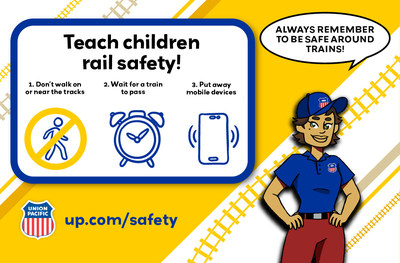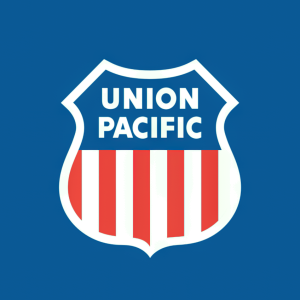New English and Spanish Lessons Aim to Make Rail Safety a Universal Language for Teachers, Students and Their Families
Union Pacific Railroad has launched a multilingual rail safety campaign in partnership with Twin Cities Public Television. The initiative aims to educate families and educators about rail safety as students return to school. Featuring new English and Spanish multimedia materials, the campaign highlights essential safety tips, including limiting technology use, waiting for trains to pass, and obeying signs. This is the third consecutive year of collaboration, but it marks the first nationwide expansion of the program. Resources are available for download on the company's safety websites.
- Nationwide expansion of rail safety campaign enhances community outreach.
- Collaboration with Twin Cities Public Television elevates the initiative's visibility.
- None.
Union Pacific Railroad and Twin Cities Public Television Partner on Multilingual Rail Safety Campaign
OMAHA, Neb., Aug. 18, 2022 /PRNewswire/ -- Union Pacific Railroad and Twin Cities Public Television (TPT) are teaming up to make rail safety a universal language, launching new English- and Spanish-language safety multi-media materials aimed at families and educators as the "Back to School" season kicks off nationwide.
"With more than 140,000 miles of track and 212,000 rail crossings in the U.S., chances are you and your child will come across at least one on the way to and from school, whether it's on foot or by car," said Union Pacific Assistant Vice President and Chief Safety Officer Connie Roseberry. "Now, is the perfect time to talk about staying safe around the tracks, just as you would remind a child to look both ways when crossing the street. We're proud of our work with TPT to provide families a fun, engaging way to talk about rail safety, and give educators free, downloadable tools for their classroom."
According to data from Safe Kids Worldwide, more than
- Limit Technology Use: Phones, watches and games can become a dangerous distraction. Put devices and ear buds away until you safely cross the tracks.
- Wait for Trains to Pass: Never try to race a train, always wait for it to pass. Wait until all warning devices are clear before crossing.
- Always Obey Signs: Only cross railroad tracks at designated crossing areas. Do not walk on or near the tracks, and do not go around warning devices.
New videos and social media infographics that drive home these safety tips are being featured over the next two months on PBS and Univision/Televisa stations in Chicago, Illinois; San Antonio and Houston, Texas; Portland, Oregon; Los Angeles, California; and Minneapolis and St. Paul, Minnesota.
This is the third year Union Pacific and TPT have worked together to deliver multilingual safety messages through the Community Ties Giving Program, but the first time the message has been expanded nationwide, through a regional partnership grant.
Visit www.UP.com/safety or www.UP.com/seguridad to download English- and Spanish-language learning guides, or dance to the Train Safety Cha Cha jingle.
Union Pacific (NYSE: UNP) delivers the goods families and businesses use every day with safe, reliable and efficient service. Operating in 23 western states, the company connects its customers and communities to the global economy. Trains are the most environmentally responsible way to move freight, helping Union Pacific protect future generations. More information about Union Pacific is available at www.up.com.
![]() View original content to download multimedia:https://www.prnewswire.com/news-releases/new-english-and-spanish-lessons-aim-to-make-rail-safety-a-universal-language-for-teachers-students-and-their-families-301608712.html
View original content to download multimedia:https://www.prnewswire.com/news-releases/new-english-and-spanish-lessons-aim-to-make-rail-safety-a-universal-language-for-teachers-students-and-their-families-301608712.html
SOURCE Union Pacific Corporation
FAQ
What is the goal of Union Pacific's new rail safety campaign launched in 2022?
What languages are included in the rail safety materials from Union Pacific?
When was the multilingual rail safety campaign by Union Pacific launched?
How can families access the rail safety materials from Union Pacific?
What are some safety tips provided in Union Pacific's rail safety campaign?









